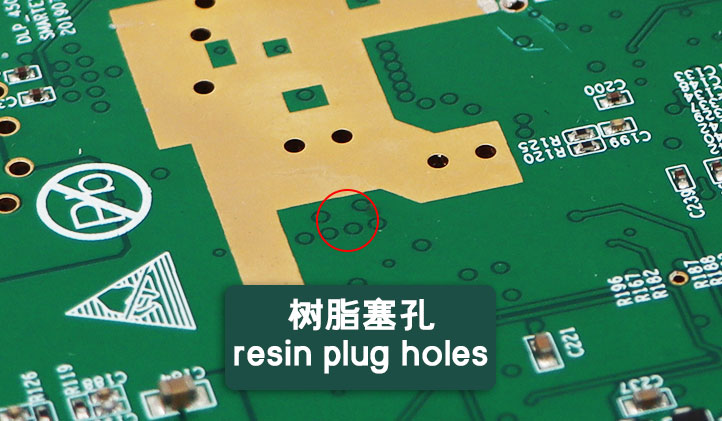What is PCB resin hole plugging process?

Resin plugging is a specialized process used in PCB manufacturing. As the name suggests, this process involves filling the vias in a PCB with resin material to seal them. Resin plugging is mainly used in high-density, high-frequency, and multilayer PCBs. Let's explore why PCB manufacturing requires resin plugging.
To understand the necessity of resin plugging, it's important to first understand the role of vias. PCBs typically have various types of vias, such as through-holes, buried vias, and blind vias, especially in high-density, multilayer boards where the number of vias is significantly higher. These vias serve crucial functions, including providing conductive pathways, connecting the inner and outer layers of the PCB, securing components or the PCB itself, and enhancing heat dissipation.
However, during subsequent soldering processes, if these vias are not sealed, solder can flow into them, leading to soldering defects, which can compromise the stability and reliability of the circuit board. The resin plugging process effectively addresses this issue by filling the vias with resin material, preventing solder from entering and thus ensuring the quality of the soldering.
Some may wonder if reducing the number of vias could eliminate the need for resin plugging. In reality, the number and placement of vias in PCB design are determined by the circuit's functionality and layout, and each via serves a specific purpose. While reducing the number of vias might decrease the need for resin plugging, it would significantly limit the design of high-density boards and make it difficult to ensure the stability and reliability of electrical connections. Therefore, resin plugging is an essential process in the production of high-density and complex PCBs.

